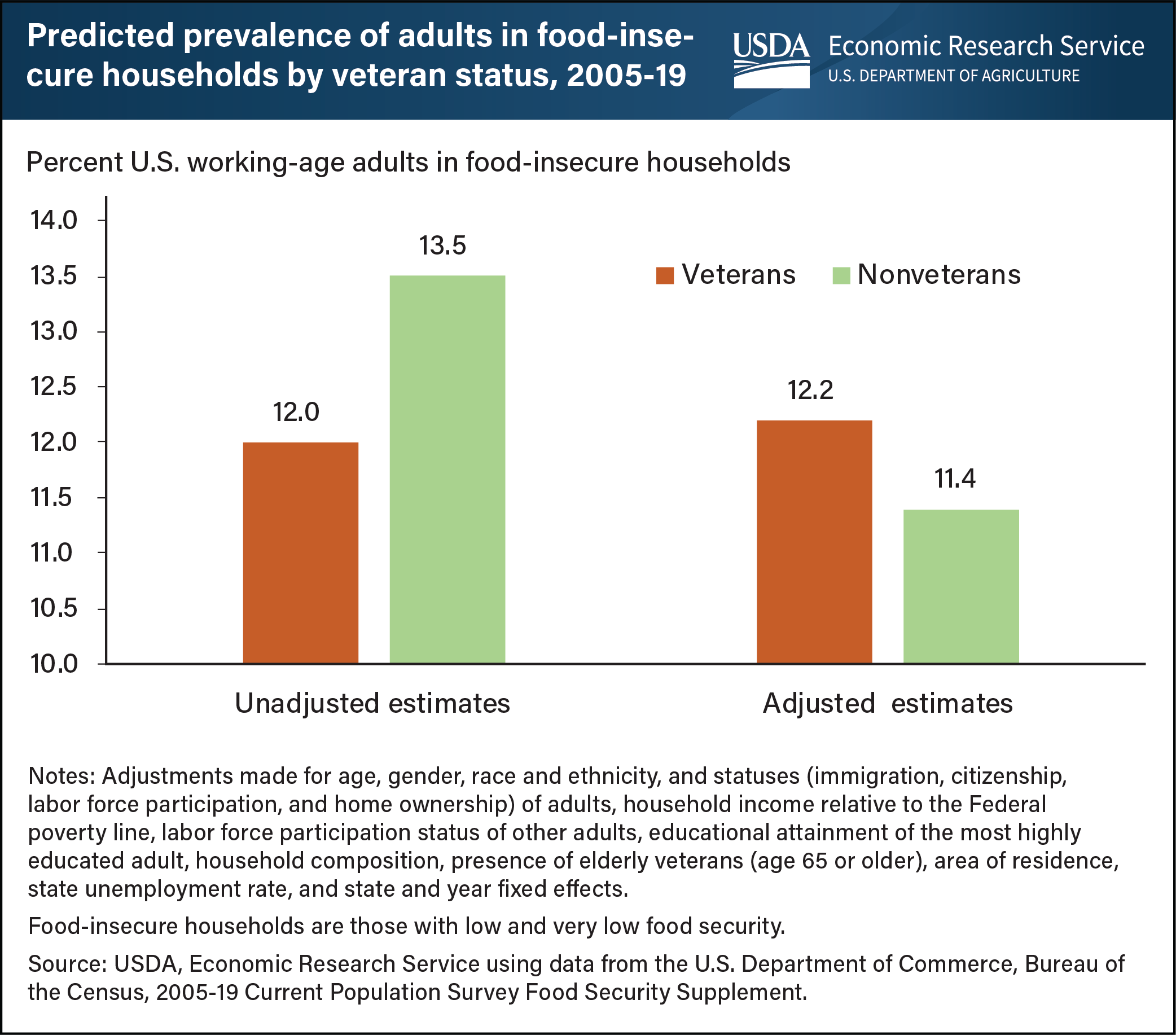From 2005 to 2019, working-age veterans more likely to live in food-insecure households than similar nonveterans
- by Matthew P. Rabbitt
- 5/27/2021

Working-age veterans were 7.4 percent more likely to live in a food-insecure household than similar working-age nonveterans from 2005 to 2019, according to research by the USDA, Economic Research Service (ERS). ERS economists used food security data from the U.S. Bureau of the Census to examine the relationship between food insecurity and prior military service. Food-insecure households had difficulty providing enough food for all its members because of a lack of resources. To reflect the strength of the association more closely between food insecurity and prior military service, ERS controlled for differences in individual and household-level characteristics associated with food insecurity among working-age adults, age 18-64. Examples of these differences include income, disability status, educational attainment, and race and ethnicity. From 2005 to 2019, before making these adjustments, 12.0 percent of working-age veterans and 13.5 percent of working-age nonveterans were estimated to live in food-insecure households. However, after controlling for differences, the average annual predicted prevalence of working-age veterans living in food-insecure households was 12.2 percent compared to 11.4 percent of working-age nonveterans. In addition, predictions show that working-age veterans were more likely to live in households with very low food security. This is a more severe range of food insecurity that involves the reduction of food intake for one or more household members and disruption of normal eating patterns. This information is drawn from the ERS report, “Food Security Among Working-Age Veterans,” released May 26, 2021.
We’d welcome your feedback!
Would you be willing to answer a few quick questions about your experience?

